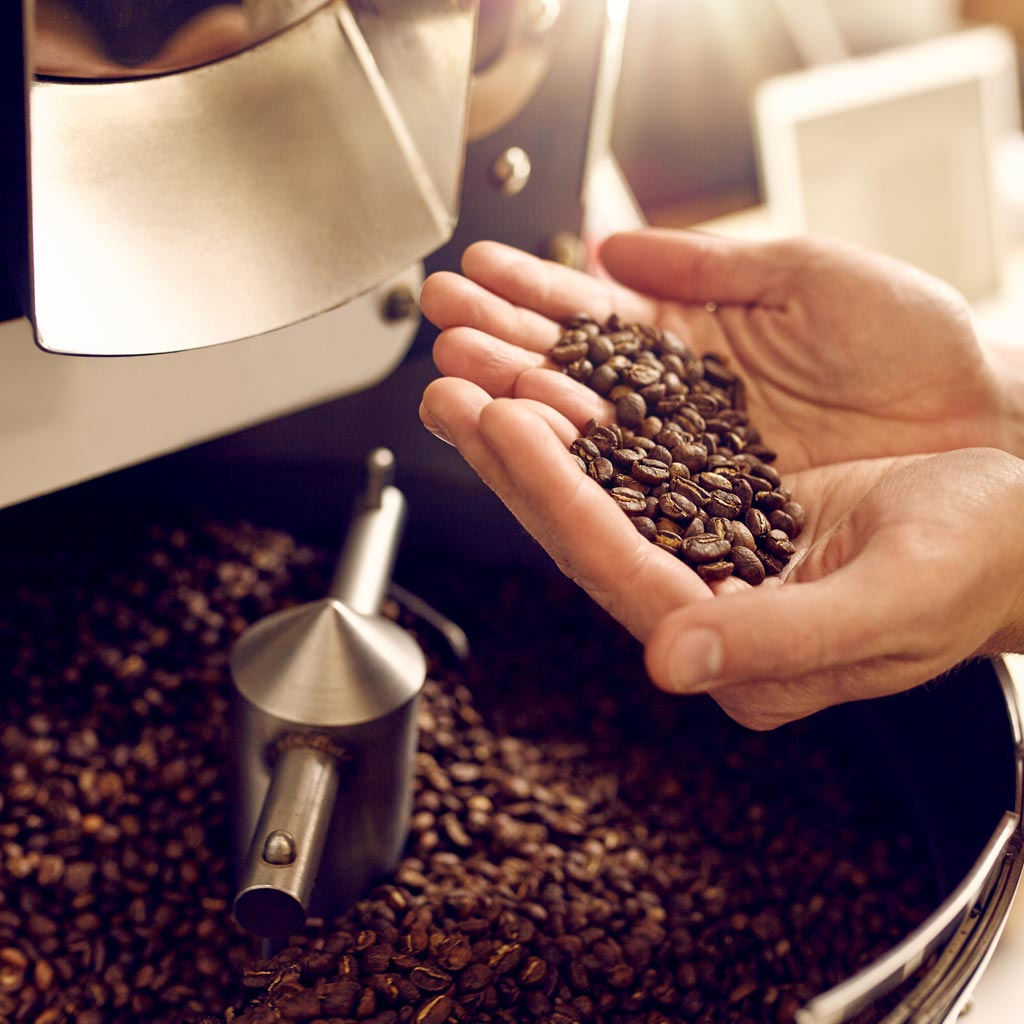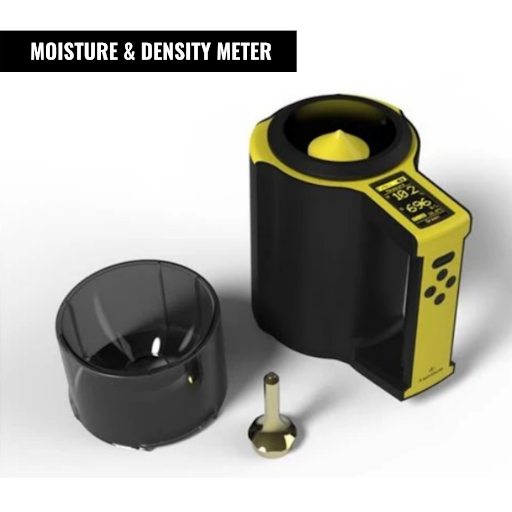
Coffee Meters and Readers: Roasting’s Portable Power Tools to Measure Moisture, Density, and Color

Here’s a little story for you: At the time of this writing, we have been working with a vendor to offer a promotion on moisture/density meters and coffee roast color readers — two handy and, for some roasters, indispensable tools in the arsenal for managing and refining roasting profiles.
This led us to decide to write a “quick blog post” about what these measuring instruments are, why they matter, and why our customers would benefit from investing in them. Except if you know anything about the coffee world, you know that many of the factors that go into a great roast are pretty much just as complex as the roasts themselves. It’s hard to talk about these tools without taking a deep dive into the metrics of moisture, water activity, density, and color — and the impact they all have on producing the perfect roast. So, a “quick blog post” seems like a lofty goal.
But! We are gluttons for punishment, so we’re going to try to give you as succinct an explanation as we can of these basic principles, why you should care, and then link that to how moisture/density meters and coffee roast color readers can help lead you to roasting victory. And we’re going to try to do it in less than 2,000 words. We know. Call us crazy.
So let’s dive in, shall we?
Let’s start with moisture content. As you might know, moisture content has been a defining characteristic of the coffee export trade almost since the dawn of time. If you’ve been in the roasting world for any length of time, then you may have heard that a moisture content level of 12% is often considered the moisture content threshold for coffee. So much so that a coffee purchase may fall through if this threshold is exceeded.

What exactly is moisture content?
Well, it’s defined as water-bound up inside the coffee seed. When a coffee cherry is picked, the seed is full of water and must be dried before being bagged up and sold. It’s generally accepted that drying coffee is the most critical post-harvest processing step and that in general, lower drying temperatures are better for preserving quality. And one of these measures of quality is that moisture content threshold we mentioned no higher than 12%.
Just as water is bound up inside of the coffee seed, so are other compounds bound up — and they’re susceptible to escape and degradation, particularly if damage to the coffee seed occurs during the drying process. This means that quality can escape from green coffee even as it rests on a shelf.
So, here’s the TL;DR (too long; didn’t read) version: Moisture content matters because it is an indicator of coffee quality. The moisture content of no higher than 12% helps protect the coffee beans’ other compounds and limits their ability to escape and degrade….even from the shelf.
With us so far? Now, let’s consider water activity.
While moisture content is a good indicator of a coffee bean’s quality for the reasons above, water activity is a good determinant of the coffee bean’s structural integrity, which influences its ability to retain moisture and volatile aromatic compounds.
So, while moisture content refers to the water-bound up inside the coffee seed, water activity helps determine the coffee beans’ stability and ability to retain moisture and other desirable attributes that are called out in its flavor profile and in cupping.
Water activity specifically is relevant to coffee in a few ways:
-
Product Safety: Mold and other microbes can grow at a water activity range of around 0.60. If it gets higher than that, molds and other microbial activity increase. Water activity should never exceed 0.78.
-
Shelf Stability: Water activity measurements can help indicate the shelf stability of coffee, particularly as it relates to past crop flavors. These flavors are related to the escape and/or chemical change in compounds created inside the bean and preserved (or not) by the drying process post-harvest. While it’s impossible to predict an exact shelf-life using water activity readings, we can use water activity to give us an indication of how well-dried, and thus how stable, a green coffee might be. When used in conjunction with moisture content, this can be a powerful tool for evaluating the longevity of a high-dollar/high-quality product value. For most purposes, the upper limit of 0.60 seems like a convenient “soft” limit for predicting shelf stability for more than six months past harvest under normal storage conditions.
- Browning and Caramelization: Water activity also has the ability to predict the potential and rate of changes related to browning reactions like caramelization and Maillard reactions. We know that these reactions are absolutely critical to the development of complex chain sugars and aromatic compounds and flavors in coffee as it roasts. Maillard reaction rate increases in conjunction with water activity, reaching maximum potential at between 0.60 and 0.70, with increases beyond 0.70 generally decreasing likelihood again.
So, to recap the main data points:
- Improved coffee shelf stability = Range of 9-12% moisture content and 0.45 - 0.60 water activity
- Increased rate of browning reactions = 0.60 - 0.70 water activity
You can see that the range for shelf stability is a little lower than the peak for browning reactions and that the microbial activity potential increases beyond 0.60. In light of these signposts, coffee’s ideal water activity could be described as “close to 0.60.”

The roaster’s dilemma is now this: Each roaster and buyer must choose on which side of this line they prefer to err: higher than 0.60 increases rate of browning reactions like Maillard and water activity (creating rich, delicious flavor), but also increases both the risk of safety and stability. A coffee with a water activity around 0.63 may taste great three months after harvest but may fade more rapidly than a coffee with a water activity of 0.57.
If we were going deeper into the subject matter, we could consider the merits of dry-processed versus wet-processed coffee, and the impact each might have on water activity readings on quality and stability, but we’ll let you hop down those rabbit holes if this topic is your jam.
Instead, we’re going to press pause on that and take a look at density. Density is one of the basics of coffee roasting — “hard beans” and “soft beans” and why that matters, and how it can affect your roast. For purposes of this blog post, we’re not talking about Hard Beans and Soft Beans as a classification scale; instead, we’re just talking about the general properties that come with increased (hard) and decreased (soft) density.
So now let’s look at what density actually means and how that affects roasting. You likely know that coffee matures more slowly in higher altitudes, due to the cooler temperatures, making it denser. These beans are more desirable because sugar content and flavors are more developed, leading to better acidity. Lower-altitude grown coffee leads to softer beans that mature faster and are more porous because of the warmer temperatures. higher density tells us there is a greater concentration of cells and a more compact cell structure than its lower density counterparts. How that bean absorbs energy, withstands pressure, cracks, and develops is going to vary from beans with lower density.
But altitude is just one of many factors that can affect density. Other factors like coffee species and varietal, processing methods, soil quality, and more also come into play. Additionally, density also depends on the moisture content (see how we’re connecting the dots?) of the bean — meaning the freshness, processing quality, storage, and other factors.

Moisture/density meters can help you measure these attributes and use this data to make some roasting decisions. And we’ll discuss these meters more later. First, we’ll share a way that you can determine if your bean is hard or soft, and therefore get a quick sense of its density.
Look at your green bean’s centerline. The more open it is, the softer the bean. If it’s closed, it has a higher density structure. Hard beans react better than softer beans, so the flavor development is better. However, they are more resistant to heat.
Soft beans have a bean structure that is less solid than hard beans. There are air pockets that slow down the inward transfer of heat. The surface of the bean could overheat, risking scorching, if the heat is too high. So, you should use a lower charge temperature (initial temperature) for soft beans — and aim for a longer roast. You might liken this to one of classic barbequing’s basic rules: For softer beans, go “low and slow.”
Here’s where the moisture/density meters come in: Say it together with us…..data is key!
Before roasting, record the moisture content, density, and temperature you plan to roast at. Then, while roasting, keep recording all the data you have. This will help you understand the final result and then narrow down the perfect roast profile for each coffee. As you cup it, you’ll be able to map the impact of density and temperature on the final cup and understand their relationship better.

Finally, let’s look very briefly at coffee roast color analyzing. Along with tasting your coffee, the most effective tool in analyzing the degree of a roast, especially for consistency, is a coffee roast color reader. This tool gives a specific number for the color that coffee is roasted to.
To use this tool most effectively, measure the color of the whole bean coffee and then measure the color of the same coffee, but the ground. This gives you two numbers and shows a comparison of those numbers. You can then measure future roasts against these numbers. If they’re too far off, you might be able to determine where you went off track and then course correct for next time.
So, let’s connect all the dots.
Roasting is a beautiful blend of art, sensory instinct, and science — and it takes time to understand how these all play off of each other. Honing your instincts is critical, but having reliable tools that give you concrete, measured, clear information about your coffee is vitally important to running a consistent and reliable coffee roasting program.
Tools like the moisture/density analyzer and coffee roast color reader allow for:
- Better Consistency: Develop better roast habits by analyzing each roast for differences internally and externally
- Easier Quality Control: Using a reliable instrument is better than guessing and evaluating continuously
- More Understanding: See the effects of small changes in your roast before you get to the cupping table.
And tools like these can also be sanity savers. Despite how you grow as a roaster, there are bound to be days when you feel defeated.
So, here’s the real TL;DR message: Just keep keeping on. On the harder days, rely on your tools. Keep recording your data, keep analyzing your results, and keep learning more. Slowly but surely, you’ll see your roasts improve.


Leave a comment